Results 5,001 to 5,010 of 12089
Thread: Anandtech News
-
05-18-15, 11:32 AM #5001
Anandtech: Braswell Motherboard Surfaces Online: Quad Core 14nm Airmont in ASUS N3150
When Intel initially released its Airmont platforms, Braswell for mini-PCs and Cherry Trail for tablets, it was unclear whether or not we would see custom desktop build equivalents, rather than just pre-built units. All the SoCs in the Braswell range were officially labelled as mobile parts, falling under the Celeron codename, for this reason. Intel has also recently released Xeon D, tackling the SFF space for enterprise use, but in the back of our minds we were always expecting an upgrade to the low-end Bay Trail motherboards with soldered down processors. Having already heard some news on the grapevine, ASUS is first to publicly display their motherboards online (well, one at first), albeit with no link through the main site and as a result this link was passed on to us by SH SOTN.
The N3150M-E is a micro-ATX motherboard with the Celeron N3150 processor built-in, and due to the 6W TDP being low enough, we also get a built in fanless heatsink. Braswell supports two DDR3L-1600 memory channels, and perhaps somewhat oddly we have them both here at right angles to each other. Online Intel lists the maximum memory compatibility for the CPU as 8GB, although the Beebox we reported on earlier is rated for 16GB so I would assume that the motherboard side of the equation should be able to do this too.
There is a full PCIe 2.0 x16 slot with x8 bandwidth, allowing for those esoteric arrangements of Atom plus discrete graphics or just for an additional PCIe card, such as a RAID card for a storage platform. By default the N3150M-E gives two SATA 6 Gbps ports, a COM header, a USB 2.0 header and a USB 3.0 header. There are also two USB 3.0 ports on the rear, along with a Realtek network port and Realtek ALC887 audio. The audio solution is an upgraded one, with at least PCB separation between the audio channels and a couple of filter caps. Onboard video outputs are via a VGA and a HDMI connector, and we also get an LPT port for good measure.
The Celeron N3150 is a 14nm Airmont based quad core solution, featuring a 1.6 GHz base clock and a 2.08 GHz turbo. Onboard graphics are via Intel’s Gen8, with 12 EUs having a boost frequency of 600 MHz. Technically Brett has already had a quick review of Airmont cores in the Surface 3's Cherry Trail SoC, though it would be interesting to get a desktop variant in to see how the performance compares to previous desktop Atom units.
Source: ASUS, SH SOTN.
Gallery: Braswell Motherboard Surfaces Online: Quad Core 14nm Airmont in ASUS N3150M-E



More...
-
05-18-15, 01:30 PM #5002
Anandtech: The ASUS ZenFone 2 Preview
ASUS is not new to the smartphone market. Since the days of Windows Mobile (not the new Windows Mobile) they've been selling smartphones. But when it comes to Android devices they've been primarily focused on tablets. ASUS worked with Google to design and manufacture both generations of the Nexus 7, which was beloved by Android enthusiasts. Their Padfone devices were an attempt to have a smartphone that attached to a tablet shell to make a sort of 2-in-1 smartphone and tablet. But only recently has the company started making a serious push into the Android smartphone space. Their ZenFone line of phones consists of several devices, with the newest being the ZenFone Zoom and the ZenFone 2, the latter being the device I'm looking at today. While the full review is yet to come, you can continue on to see my initial impressions of the new ASUS ZenFone 2.
More...
-
05-18-15, 05:00 PM #5003
Anandtech: NVIDIA Releases 352.84 Drivers - First WHQL Win10 Driver Set
Up to recently, all Windows 10 video drivers have been distributed through Windows Update. With the OS still under active development and this specific version of Windows including the greatest overhaul to the OS’s graphics layer since Windows Vista, Microsoft and the GPU vendors have not been taking any chances so far, limiting driver releases to Windows Update. However with Windows 10 getting closer to completion, it looks like that policy is coming to an end this month with the first stand-alone WHQL Win10 driver release from NVIDIA.
At the tail-end of last week NVIDIA released driver version 352.84 for Windows 10, which for the most part is analogous to today’s 352.86 release for Win7/8. 352.84 in turn marks an important stage in the development of Windows 10 display drivers, as it’s the first stand-alone WHQL driver release from NVIDIA. NVIDIA’s only previous stand-alone release was 352.63 Beta (also from the same R352 branch), which came out a couple of weeks ago.
The fact that NVIDIA was proclaiming this as their first WHQL release threw me for a loop at first, but after reaching out I’ve finally been able to piece together a near-complete picture. Throughout the release cycle of WDDM 2.0 drivers for Windows 10, the drivers being distributed through Windows Update were flagged as WHQL certified, including drivers like NVIDIA’s 349.90 release from March. The fact that Windows 10 was already claiming to have WHQL certified drivers made NVIDIA’s announcement very odd, since it would mean that Windows Update has been sending out WHQL’d NVIDIA drivers for months now.
However as it turns out, WHQL flagging on those earlier releases has been for distribution purposes (I suspect Windows isn’t setup to distribute and silently install non-WHQL drivers), and not for certification purposes. From a certification perspective, Microsoft only started accepting drivers for WHQL certification last Friday. So the release of 352.84 really is the first and proper WHQL display driver release for Windows 10, with the WHQL flags on earlier Windows Update releases having essentially been false.
Given the state of Windows 10 development, this makes a great deal more sense, as Microsoft traditionally doesn’t start certifying drivers until close to the OS’s release. And with WHQL certification opened up, this also indicates that Microsoft is looking to release the OS to manufacturing within the next few months, as has been rumored for some time now. But with that said, at this point Windows 10 is still under active development – just go install build 10074 and see for yourself – so while we have our first WHQL display drivers, I wouldn’t pop the cork just yet as there are clearly still some issues in the OS to work out, and I expect the GPU vendors will be chasing obscure WDDM 2.0 bugs for months to come. However for game developers working on the first wave of DirectX 12 games, this should be welcome news as it gives them a better platform to test against.
Meanwhile since this is the first stand-alone WHQL release from Microsoft, we attempted to give these drivers a run on a Fermi card only to find that there’s no Fermi support in these drivers. Since 2014, NVIDIA has run a two-tier development track where Fermi support is disabled in beta drivers, and then enabled in release/WHQL drivers. We had been expecting something similar on the Windows 10 front, however this is not the case, with the current driver set only supporting Kepler and Maxwell. After checking with NVIDIA on the status of Fermi, they’ve told us that Fermi support is still under development and that they are “working hard to bring DirectX 12 driver support to Fermi-based cards as soon as possible.” Given that Fermi is the oldest GPU architecture to support DirectX 12 it’s going to be an interesting test case for the new API, but at the same time I’m not surprised that NVIDIA has focused on Fermi last since Kepler replaced Fermi almost 3 years ago (before Windows 8 was even out). In any case, we should be seeing WDDM 2.0 support for Fermi a bit later this year.WDDM 2.0 Support Status Current Status NVIDIA Maxwell 2 (900 Series) WHQL NVIDIA Maxwell 1 (750 Series) WHQL NVIDIA Kepler (600/700 Series) WHQL NVIDIA Fermi (400/500 Series) In Development
Anyhow, as always you can grab the drivers for all current desktop and mobile NVIDIA GPUs over at NVIDIA’s driver download page.
More...
-
05-19-15, 02:18 AM #5004
Anandtech: Ruckus Unifies Product Platforms under SmartZone Umbrella
The enterprise Wi-Fi market has been growing at a tremendous rate, thanks to the proliferation of smart wireless devices (even in business settings). There are many vendors targeting the enterprise WLAN space Ruckus Wireless, Aruba Networks and Ubiquiti Networks are examples. We talked briefly about Ruckus Wireless when we covered the launch of their cloud-based WLAN management service last year.
Till now, Ruckus has had different product lines for different market segments - small business, medium-sized enterprises, large scale enterprises and carrier-grade infrastructure. However, as the number of WLAN clients for a given system increases, the traditional market delineation makes it difficult for customers to choose the correct product. In order to solve this problem, Ruckus is introducing an umbrella 'SmartZone' platform which allows their customers to easily upgrade the infrastructure to meet future requirements ('Wi-Fi as you grow').
The new Ruckus SmartZone has a single-pane software interface for different deployments (on-premises single controller, clustered controllers as well as virtualized WLAN controllers). These can scale from one up to 300K devices. In terms of hardware offerings, we have the SmartZone 100 WLAN Controller, each of which can support up to 25K clients and 2048 WLANs, with up to 10 Gbps data throughput. Each can manage up to 1000 Ruckus ZoneFlex Access Points and a cluster can have up to three units.
Ruckus is also supporting virtual SmartZones (vSZ) for easy scaling and flexibility with software-defined networking (SDN) and support for network functions virtualization (NFV). The vSZ can support up to 30K APs and 300K clients. Rounding up the SmartZone platforms is the Ruckus SmartCell Gateway SCG-200. By integrating 3GPP gateway functions along with WLAN controller duties, the SCG-200 can help carriers to integrate Ruckus WLANs into their existing mobile networks. Wi-Fi is being talked about as a credible solution for congested mobile network cells, and the SCG-200 targets that market trend.
The SmartZone 100 has a MSRP of $4995 (for the 1 Gbps throughput model), while the vSZ licenses will go for $995 for each deployed instance. Each ZoneFlex AP attached to either carries an additional $100 license fee.
More...
-
05-19-15, 08:00 AM #5005
Anandtech: AMD Dives Deep On High Bandwidth Memory - What Will HBM Bring AMD?
Earlier this month at AMD’s 2015 Financial Analyst day, the company announced that they would be releasing their first High Bandwidth Memory-equipped GPU – the world’s first HBM-equipped GPU, in fact – to the retail market this quarter. Since then there have been a number of questions of just what AMD intends to do with HBM and just what it means for their products (is it as big of a deal as it seems?), and while AMD is not yet ready to reveal the details of their forthcoming HBM-equipped GPU, the company is looking to hit the ground running on HBM in order to explain what the technology is and what it can do for their products ahead of the GPU launch later that quarter.
More...
-
05-19-15, 10:02 AM #5006
Anandtech: Apple Announces 2015 15” Retina MacBook Pro, Cheaper 27” Retina iMac
This morning Apple announced the release of the 2015 refresh of their 15” Retina MacBook Pro lineup. With the 13” rMBP having been updated with an Intel Broadwell processor back in March, we were expecting a similar update for the 15” model around this timeframe, however as it turns out Apple will be sticking with Haswell just a bit longer. Let’s jump into the specs.
As far as the overall design goes, based on Apple’s specifications it does not look like the chassis has been updated in any way. The 15 rMBP’s dimensions are identical - it’s still 0.71” (18mm) thick – though the weight has gone up very slightly from 4.46lbs (2.02kg) to 4.49lbs (2.04kg). Nor have the ports changed, with a combination of USB 3.0, Thunderbolt, MagSafe 2, and not a Type-C port in sight.15" Retina MacBook Pro Lineup Model 2014 (base) 2014 (high-end) 2015 (base) 2015 (high-end) Dimensions 0.71 inch (1.8 cm) x 14.13 inches (35.89 cm) x 9.73 inches (24.71 cm) Weight 4.46 lbs (2.02 kg) 4.49 lbs (2.04 kg) CPU 2.2GHz Core i7-4770HQ
(Haswell)2.5GHz Core i7-4870HQ
(Haswell)2.2GHz Core i7-4770HQ
(Haswell)2.5GHz Core i7-4870HQ
(Haswell)GPU Intel Iris Pro Intel Iris Pro + GeForce GT 750M (2GB) Intel Iris Pro Intel Iris Pro + Radeon R9 M370X (2GB) Display 15" 2880 x 1800 IPS LCD Memory 16GB DDR3L SSD 256GB PCIe SSD (PCIe x2) 512GB PCIe SSD (PCIe x2) 256GB PCIe SSD (PCIe x4) 512GB PCIe SSD (PCIe x4) Battery Capacity 95 Wh 99.5 Wh Battery Life 8 Hours 9 Hours Price $1999 $2499 $1999 $2499
However on the input side of matters the Force Touch trackpad, first introduced on the MacBook and 2015 13” rMBP, has finally made its way over to the 15” model. In the case of the MacBook Pro Apple isn’t looking to save space in the same manner as they were the MacBook, but rather the Force Touch trackpad represents the next generation of trackpads for the company thanks to its pressure-sensitive touch and the additional input options that unlocks.
Meanwhile on the inside, much to our surprise the processor situation remains unchanged. Apple has confirmed that the 15” rMBP continues to use Intel’s Haswell processors and not their newer Broadwell processors, and as a result the processors available for the 2015 15” rMBP are identical to the 2014 processor options.
Since the processors have not changed, this also means that the 2015 models offer the same Iris Pro-equipped CPUs across the entire 15” lineup, with all models including the 40EU Iris Pro 5200 GPU. On the other hand the optional discrete GPU for the rMBP has changed; it is now AMD’s just-introduced Radeon R9 M370X, which ships with 2GB of VRAM. Unfortunately we know very little about M370X at this time – AMD’s closest part we do have specs for is the Cape Verde based M375 – so at the moment we’re unsure if this is another Verde part or if it’s something else entirely.
Elsewere, on the storage side of matters the SSDs have seen a slight upgrade. Just like the 13" rMBP earlier this year, the new 15" rMBP is now using a wider, PCIe x4 SSD. This will double theoretical maximum through, though the actual performance impact remains to be seen.
The final notable change here is that both battery capacity and battery time have gone up. Battery capacity is now up to 99.5 Wh, up from 95 Wh in 2014. It will be interesting to see the first rMBP tear-down, to see if this comes from different battery chemistry or improved space utilization to allow a physically larger battery. In either case, battery life is now speced for 9 hours for both web browsing and video playback, up from 8 hours on the 2014 model. A whole additional hour on just a slightly larger battery may be a bit optimistic, especially if Apple hasn’t made any other power savings changes.
Retina iMac
Meanwhile the Retina iMac has also received a partial upgrade, with Apple realigning their SKUs. The big news here is that Apple has done away with the non-Retina 27” iMac, and now both 27” configurations are Retina.
The new $1999 base model is essentially a slightly cut down version of the original model launched late last year, and comes equipped with a 3.3GHz Intel Core i5-4590 processor, 8GB of RAM, a 1TB hard drive (no Fusion Drive on the base model), and a Radeon R9 M290 for graphics. Meanwhile the original Retina iMac is unchanged in configuration and is now the high-end option for the iMac. At the same time its price has been brought down $200, from $2499 to $2299.27" Retina iMac Model 2015 (base) 2015 (high-end) CPU 3.3GHz Core i5-4590
(Haswell)3.5GHz Core i5-4690
(Haswell)GPU AMD Radeon R9 M290 (2GB) AMD Radeon R9 M290X (2GB) Display 27" 5120 x 2880 IPS LCD Memory 8GB DDR3 Storage 1TB 7200RPM HDD 1TB Fusion Drive Price $1999 $2299
More...
-
05-19-15, 06:03 PM #5007
Anandtech: NVIDIA To Give Away The Witcher 3 To GTX Titan X Owners Who Participate in
When NVIDIA announced their most recent GeForce game bundle, notably absent was the GTX Titan X. With Titan products typically uncontested in holding the performance crown and priced as a luxury product, NVIDIA rarely has a need to offer game bundles with the flagship cards. For that reason, the latest revelation from NVIDIA has come as a bit of a surprise.
Effective immediately, NVIDIA is going to be bundling The Witcher 3 with the GTX Titan X in a roundabout manner. Furthermore this offer applies to both new and existing GTX Titan X owners, so those buyers who have picked up GTX Titan X cards in the last two months are eligible for a post-purchase freebie, making this one of the only other cases of a retroactive bundle.
So how does all of this work? Officially NVIDIA is offering copies of the game not with the purchase of a GTX Titan X, but rather as an incentive for participating in a software beta test. The software being beta tested? A new feature to redeem game codes through GeForce Experience, with The Witcher 3 being the first product to use the system.
In any case, since the beta is open up to all GTX Titan X owners, this ends up being a de facto retroactive game bundle for the card, as the promotion covers all current cards and runs for the next month, through June 19th. As for NVIDIA’s motivations, while I don’t doubt that this is in part a serious effort to beta test the new redemption system, at the same time it’s a back-door method of launching a game bundle for their $1000 flagship card without making their existing customers irate. With AMD making their own waves today, it’s certainly an interesting coincidence.
Anyhow, GTX Titan X can find the full program details over at NVIDIA’s website. The promotion page includes detailed instructions on how to collect the Witcher 3 code through the system, and activate it through GoG and NVIDIA’s redemption system.
Finally, the fact that NVIDIA is testing a new redemption system signals an interesting shift in how future game bundles may work. While NVIDIA has not commented on this bundle so far – in fact they haven’t even announced it on GeForce.com yet – I suspect what we’re looking at is a beta test for how NVIDIA intends to distribute all bundles in the future. A distribution system through GeForce Experience not only increases the user base for that software, but more importantly it smooths over some of the logistics of bundling games. Retailers would no longer need to distribute vouchers, and based on NVIDIA’s description of how the bundling system works, it looks like this could shut down the grey market for reselling bundle redemption codes as well.
More...
-
05-19-15, 09:32 PM #5008
Anandtech: ASRock Goes Braswell: Eight SKUs including DC-In Variants
In the wake of the news regarding ASUS’ listing of their Braswell motherboards, both ASRock and MSI have been quick on their heels to also list their model lines. ASRock contacted us directly, stating that they will have eight boards on offer in total, although markets for each will vary. They will also transition directly from the Bay Trail-D line, allowing for a quick drop in where required:
Where Bay Trail’s three SoCs, the D1800, Q1900 and Q2900, come into play will be a direct lift into Braswell with the N3050 taking the D1800, the N3150 taking the Q1900 and the N3700 for the Q2900. Personally I preferred the D/Q naming.
For a direct SKU-to-SKU comparison, the N3xx0M boards are microATX, featuring full length DDR3 and a full sized PCIe 2.0 x16 slot (although it will be limited in bandwidth to x1 due to the SoC). The audio codecs between the boards are split with the ALC887 on some and the ALC892 on others, although it is Realtek RTL8111GR across the board for network connectivity. Similarly all boards have SATA 6 Gbps, but some will have two and others will have four. The two SKUs at the end (N3150DC-ITX and N3150TM-ITX) are also capable of being powered by a 19V DC-In on the rear panel, with the final one also supporting LVDS.
What is interesting about the Braswell system list here is the issue surrounding soldered down processors. Rather than have one micro-ATX motherboard and put in the processor you need, we get three different motherboards (N3700M, N3150M and N3050M) that look identical down to the traces on the board but can perform differently. It means that should any of the big CPU players decide to have a non-socketed architecture (remember rumors surrounding Broadwell?) then we would end up with a lot more motherboards on the shelf that look exactly the same, except the processor under the hood.
We’ve asked for a set of the micro-ATX sized boards (and a Q2900) to see how Braswell performs compared to our previous Bay Trail testing. Also, because I feel like sticking in a $70 to $570 discrete graphics cards into one of these and see just how far CPU scaling can go.
Launches of these motherboards will be region dependent, although I have heard from other companies that Braswell isn’t necessary going to be a big launch, and potentially small volume due to the mini-PC space which is consuming more of the point-of-sale types of systems that desktop Atom used to have.
Source: ASRock
More...
-
05-20-15, 01:36 AM #5009
Anandtech: Imagination Announces OmniShield: Hardware Security Zones For MIPS + Power
Though it would be unfair to state that there was a point where device security never mattered, it’s safe to say that the interest in security from hardware manufacturers, developers, and consumers alike has never been greater. Thanks to a combination of greater hardware capabilities, wider than ever deployments of computers in all facets of life (e.g. IoT), and yes, no shortage of high-profile security breaches, device security has become increasingly important.
So far pretty much every vendor has taken their own crack at the matter, and Imagination Technologies is no different. As the owner of the MIPS architecture and the PowerVR family of GPUs, Imagination has been working on the matter for some time now. Most recently, as our long-time readers may recall, the company announced that their forthcoming PowerVR Series 7 GPUs would support multiple hardware security zones.
This brings us to today. Building off of the earlier PowerVR announcement and in conjunction with this week’s US Imagination Summit, today Imagination is announcing that they are expanding their hardware security zone technology in to its own brand, OmniShield. Under the OmniShield banner, the technology will eventually be supported across Imagination’s MIPS CPUs, PowerVR GPUs, and Ensigma communications processors.
Though Imagination doesn’t say so by name, OmniShield is essentially Imagination’s answer to ARM’s TrustZone technology, but for the Imagination ecosystem. With Imagination’s latest CPUs and GPUs supporting OmniShield, Imagination has the ability to setup hardware security zones that cover both the CPU and the GPU, isolating not only the CPU but preventing the GPU from being used as a backdoor as well. And though the technology can be used to some extent piecemeal, it is clear that for best results the technology is best used as part of a complete MIPS Warrior + PowerVR design.
From a technology standpoint, OmniPath works by using hardware virtualization to create multiple zones where various applications and system components can be isolated from each other, allowing them to communicate only as much as desired by the hypervisor. There are several ways that developers can setup secure environments with this technology, the most basic of which is simply isolating the important parts of the OS inside a secure zone, and letting everything else run in an insecure zone. However with the ability to support up to 8 zones – a feature unique to OmniShield – Imagination is also pitching the possibilities of having various classes of applications located in their own zones, so that not only is the OS protected from apps, but apps are protected from each other as well.
As for why a developer would want to do this, the use cases are varied, but all pretty straightforward. In the consumer space this would include isolating the OS and sensitive apps (e.g. banking) from wilder apps such as web browsers, and by the same token isolating DRM-enabled apps to prevent the breaking of DRM. Meanwhile in server and embedded scenarios, this can include everything from isolating various systems operating in a firewall/router to securing core systems from entertainment systems in cars that make heavy use of embedded processors (e.g. self-driving cars).
Ultimately Imagination is responding to customer demands for additional security options in their products, but at the same time Imagination is looking to get ahead of the curve by rolling out improved security technologies ahead of the competition. Doing this level of fine grained zoning can definitely incur some overhead in weaker systems, which is why Imagination is pushing hardware virtualization so hard for both CPUs and GPUs. As for what systems the technology will end up in, with today’s launch being a branding of existing technology, OmniShield is already available in some product designs. Though from the sounds of it, shipping products using OmniShield-enabled SoCs may be a bit further off.
More...
-
05-20-15, 06:10 AM #5010
Anandtech: GIGABYTE Server Launches the MW70-3S0, Targeting 3x PCIe 3.0 x16 and LSI 3
If you’ve been following motherboard coverage over the past few years, you can’t help but notice that all the major consumer players also have their own server based business units that primarily sell to businesses. They each have a varying amount of input into the consumer space, but ultimately it depends on the product line. ASRock has their ASRock Rack brand (which should be called ASRack in my opinion!) that has had success on the consumer side with the likes of the C2750D4I which we reviewed, but they also produce a full line of products. ASUS’ server team consistently pop out consumer favorites for dual processor high-end systems, such as the Z9PE-D8WS, but they also serve a larger market away from the spotlight. Arguably the server division with the most limelight is GIGABYTE, thanks to their BRIX line. The BRIX mini-PC line, while promoted by the consumer business unit, is actually a server business unit idea. GIGABYTE also sells its motherboards direct to consumers, and is actively working with different partners and distributors worldwide to that effect, including Newegg in that list, and as a result we have reviewed a number of motherboards from them over the years. I’ve noted a few concerns but also a few plus points over those reviews, so watching the evolution and the encroachment into consumer is always an interesting activity.
To that effect, GIGABYTE Server is launching another addition to their already large LGA2011-3 Haswell-EP motherboard lineup. No-one as ever fully explained the naming system of their motherboards to me yet, but the MW70-3S0 is specifically targeted at a business or home customer that requires dual processor capability, three PCIe 3.0 x16 slots, extra SAS storage via an LSI 3008 chip and also a server level of control through the IPMI management (AST2400).
GIGABYTE Server says that 3D modelling, video production or small scale scientific analysis environments are the main aim here. Personally I’ve seen the LSI 3008, which requires eight PCIe 3.0 lanes, on the Extreme11 line of consumer motherboards, but we get it here as well. The dual processor nature of the board makes PCIe lane routing fairly easy:
What this somewhat complicated diagram means is that the two CPUs are labelled 0 and 1, with CPU0 on the right. From the 40 PCIe lanes (x16/x16/x8), we get two of the three PCIe 3.0 x16 slots and the LSI 3008 chip. CPU1 gives another PCIe 3.0 x16 slot, which uses a switch to form two x8/x8 slots, and another PCIe 3.0 x8 slot (CPU1 slots are disabled if only one CPU is installed). Technically a user can have this system in x16/x16/x16/x8 or x8/x8/x8/x8/x8/x8/x8 mode, should they own sufficient PCIe cards at the right size. Technically we’ve seen this PCIe layout possible before in the consumer space with a single socket motherboard, but that requires the use of PLX PCIe switches to get that level of bandwidth.
The MW70-S30 uses both QPI links on the CPUs to communicate with each other, and the C612 chipset is partitioned off of CPU0. The chipset uses all available SATA ports, giving 6 from the first AHCI controller that is RAID capable and 4 from the second AHCI controller without RAID. Audio is provided by the ALC887 codec, while networking comes via two Intel I210 network controllers. The IPMI management controller also uses a Realtek NIC for its own management, but both can make use of the TPM header on board as well as the ITE chip for system sensing. It is worth noting that typically the AST2400 comes with a VGA port so users can load into the OS without a discrete card for 2D scenarios – technically it says in the block diagram above that there can be one, but it is greyed out. We see that there is no VGA on the rear panel here, meaning that a video output PCIe card is needed unless the system is run headless:
GIGABYTE Server’s selling point with their LGA2011-3 lineup is full speed DDR4 support. Typically JEDEC gives specifications of DDR4-2133 for one DIMM per channel (1DPC), DDR4-1866 for 2DPC and DDR4-1600 for 3DPC. GIGABYTE promises that its design is able to handle 3DPC at DDR4-2133, allowing software to take advantage of the extra speed. Given some of the email I receive from researchers who need faster memory for their computation, this can only ever be a good thing.
Pricing is as-yet not announced, but B2B customers are free to enquire with their distributors. We might see it in the consumer line in due course as well. While it might come across that these types of motherboards all look pretty much the same, and you’re getting similar sorts of stuff on them, the reason for so many variations is usually due to the equipment onboard – if a server customer wants XYZ, then they will make XYZ if the order is large enough. Some single-company bulk orders get rebadged for other customers too, depending on the demand, as we’ve seen in the past.
Source: GIGABYTE Server
Gallery: GIGABYTE Server Launches the MW70-3S0, Targeting 3x PCIe 3.0 x16 and LSI 3008

More...
Thread Information
Users Browsing this Thread
There are currently 33 users browsing this thread. (0 members and 33 guests)




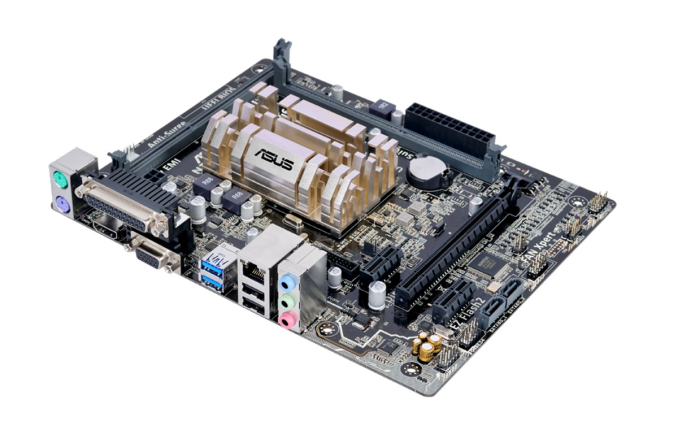
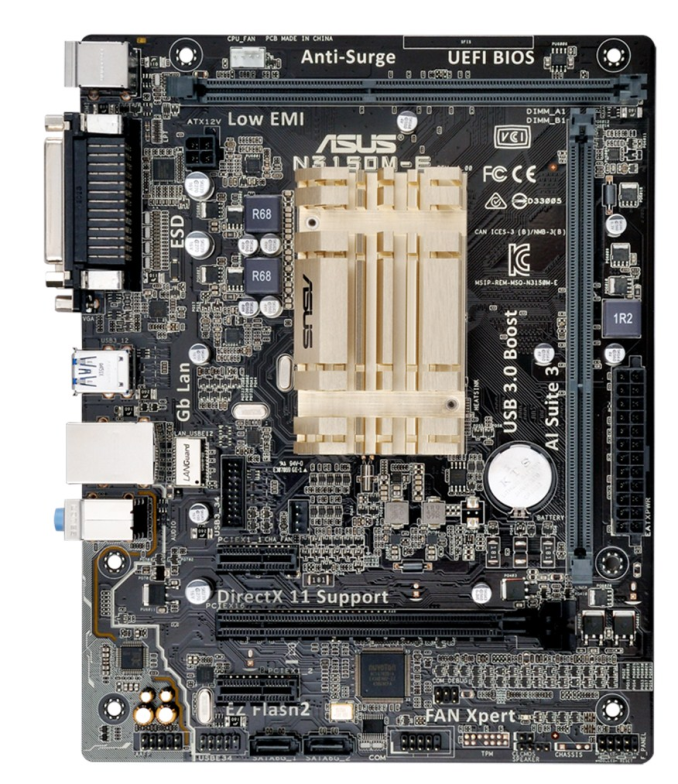


 Quote
Quote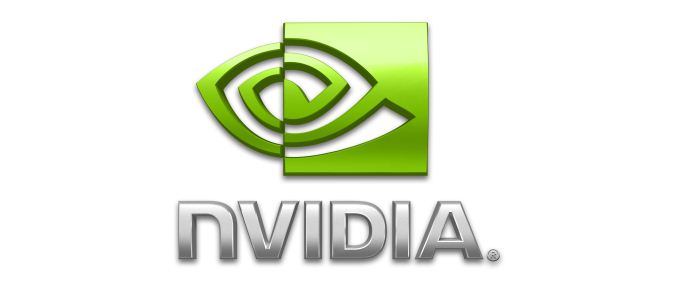

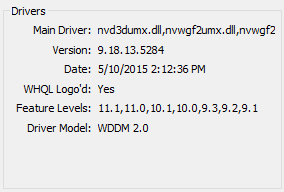

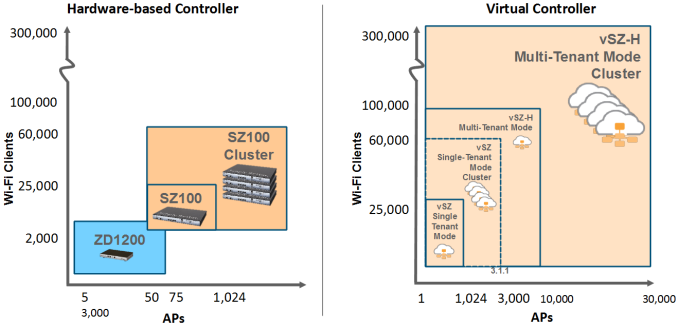

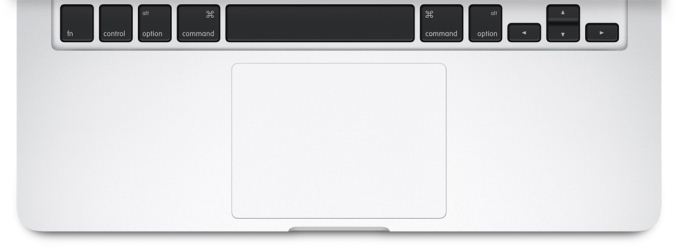
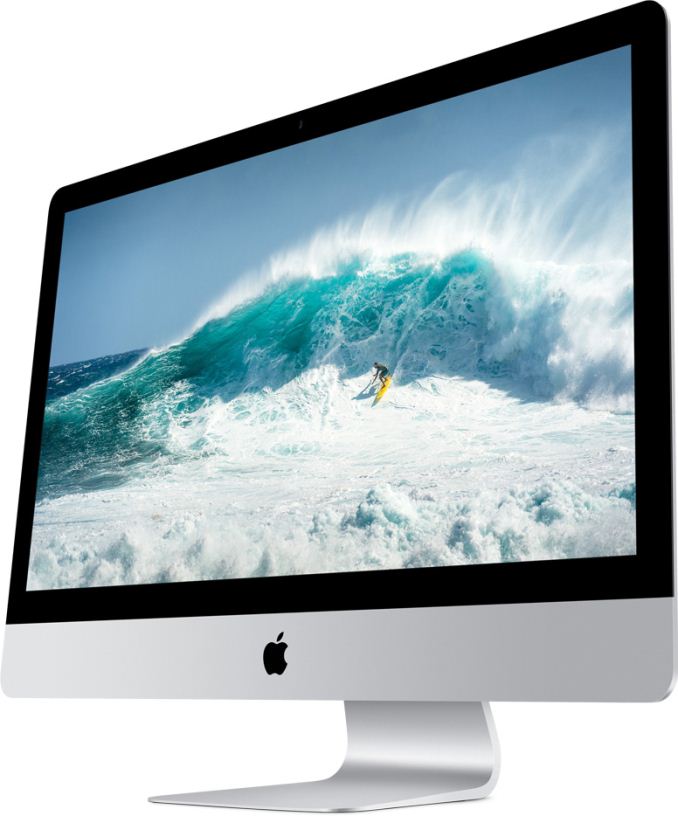

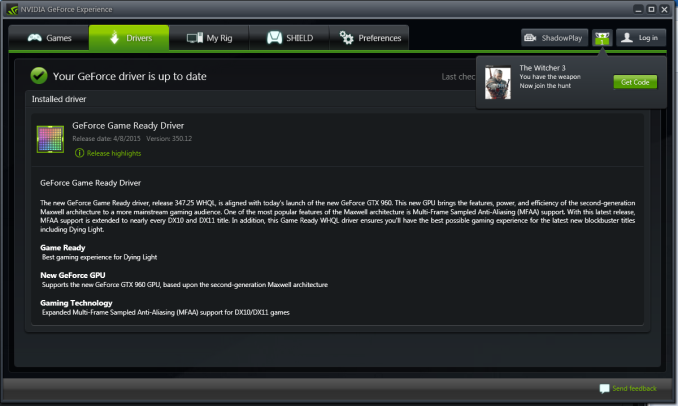
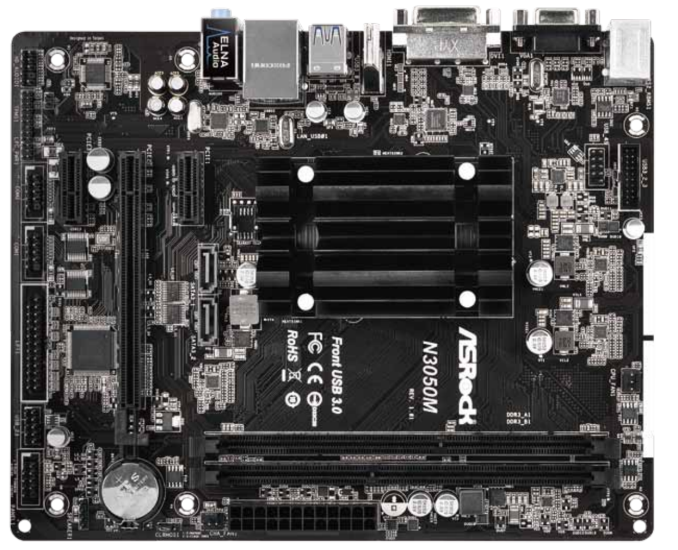
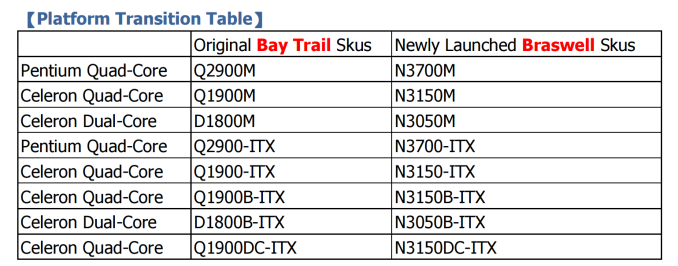
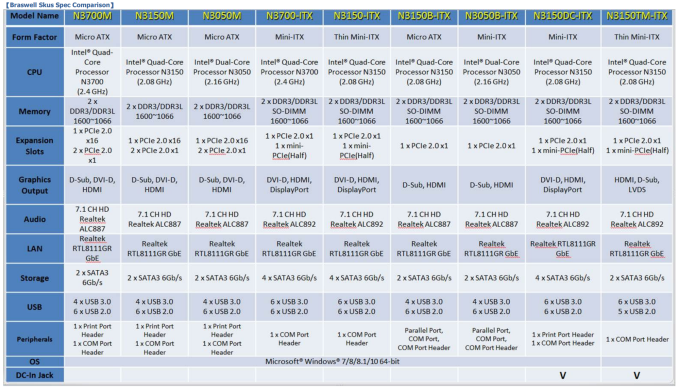
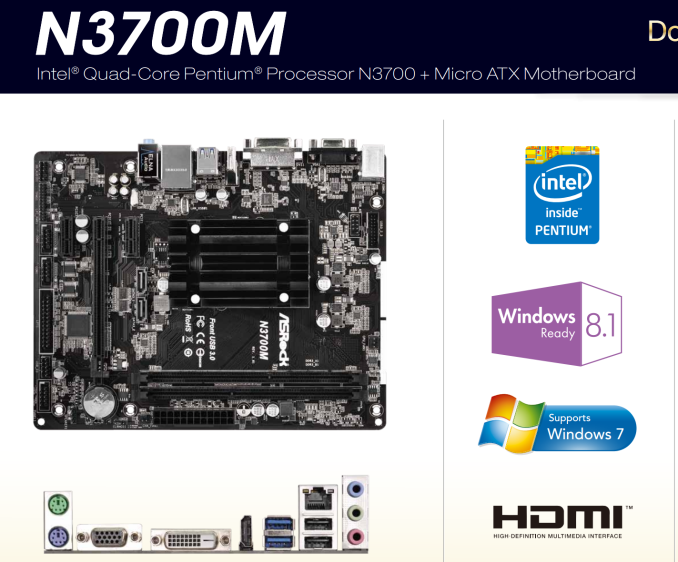


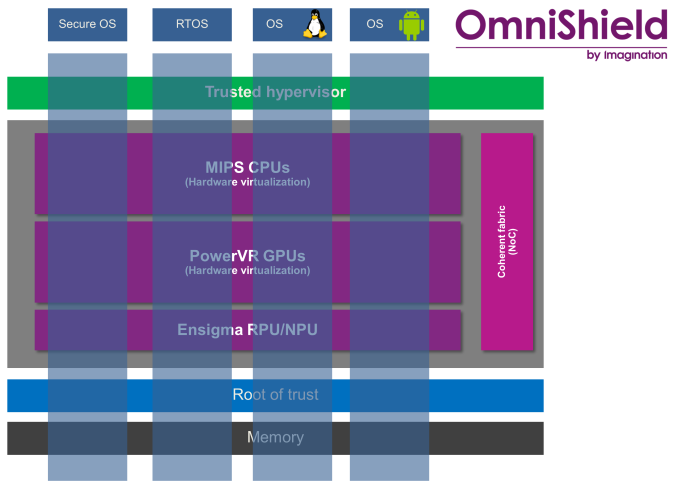
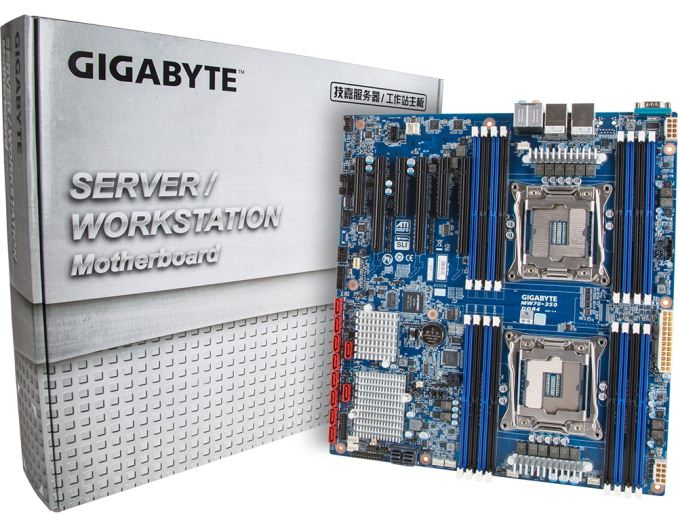
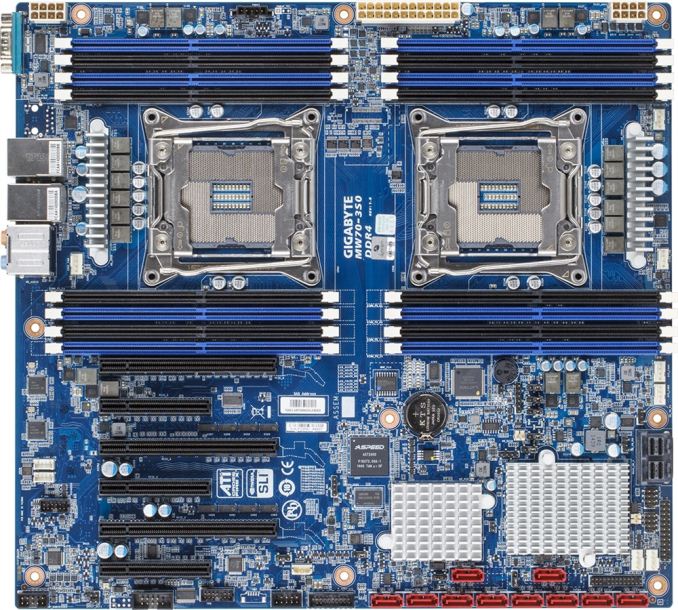
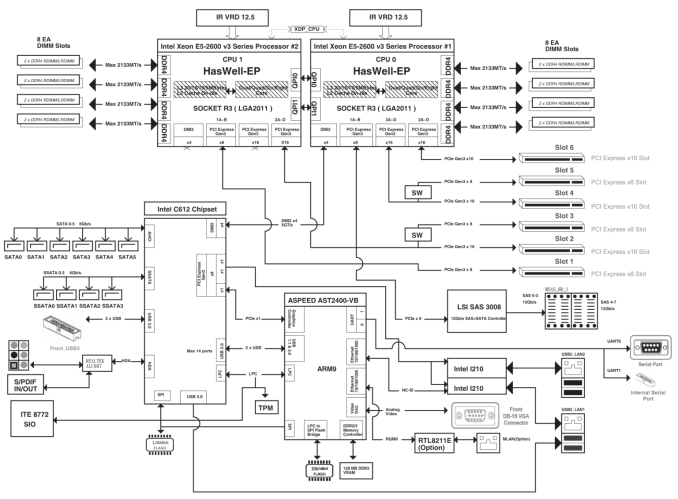

















Bookmarks